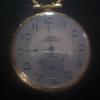I'm not sure what advice to give you, I've adjusted far more bracelets than I could guess, but the only times split pin bracelets have ever given me any trouble the solutions have always been the same and fairly obvious, if it doesn't hit out easily with my standard 0.8mm bracelet punch, double check bracelet is ideally placed in plastic bracelet vice (blocks aren't as good) and try a shortened punch and a harder, sharper tap. Once it's moved a little you can usually switch back to a longer punch.
(You can make a custom bracelet punch if you have an old discarded screwdriver (0.8-1.00 are ideal), remove the top spinning part, take a screwdriver blade or any random metal pins you might have from anything that will fit, cut to size, and file flat)
I hope I'm not insulting your intelligence with that, but you never know what isn't as obvious as you think.


